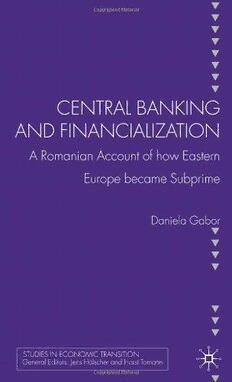
Central Banking and Financialization: A Romanian Account of How Eastern Europe Became Subprime PDF
267 Pages·2010·3.664 MB·English
Most books are stored in the elastic cloud where traffic is expensive. For this reason, we have a limit on daily download.
Preview Central Banking and Financialization: A Romanian Account of How Eastern Europe Became Subprime
Description:
At the beginning of 2009, Eastern Europe became the source of increasing concerns, as it was feared that the large foreign borrowing of its banking system could trigger an economic cataclysm. This book explores how and why Eastern Europe became subprime, taking Romania as a paradigmatic case study. It explains the region's vulnerability through the hegemony of neoliberal discourses and growing pressures of financialization in money and currency markets. The volume identifies central banks as key institutions in the reconstitution of formerly planned economies. It advances a conceptual approach to the political economy of central banking that distinguishes between monetary theory, policy discourse and practices of monetary management. This re-politicization is fundamental for understanding how central banks are produced through, and operate within, processes of neoliberal financialization. This book is indispensable reading for all interested in banking, monetary economics, political economy and development economics.
See more
The list of books you might like
Most books are stored in the elastic cloud where traffic is expensive. For this reason, we have a limit on daily download.
